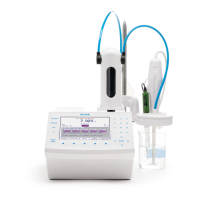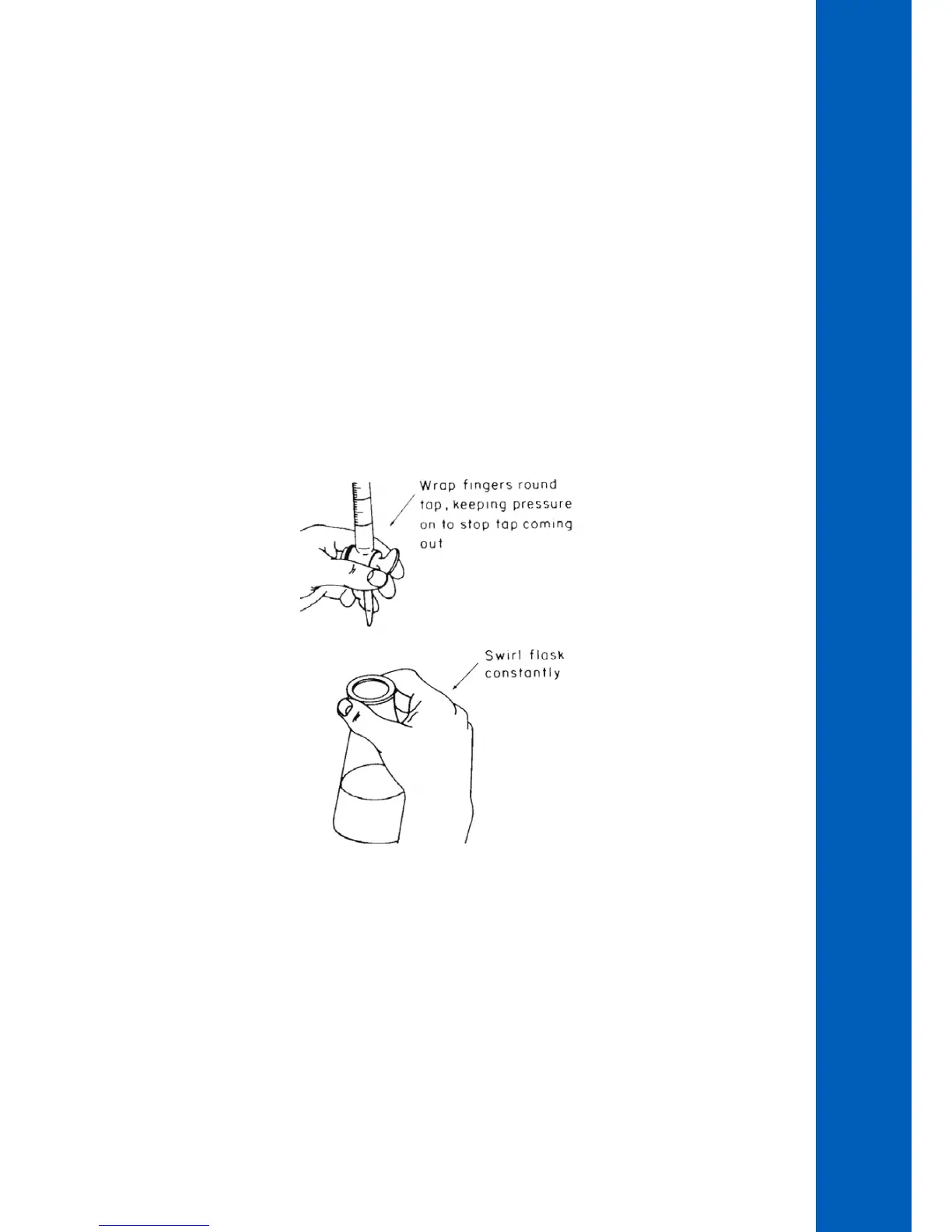3. INTRODUCTION TO TITRATION APPARATUS AND TYPICAL TITRATION PROCEDURE
3.1. MANUAL TITRATION
Apparatus required for manual titration include:
• Volumetric Burette, for precisely controlled delivery of titrant to the reaction vessel
• An Erlenmeyer, or similar flask, that facilitates constant mixing or swirling required to ensure solution homogeneity
• Volumetric pipettes for the precise addition of samples and indicator solutions
• Titrant solutions of known concentration
• A visual or instrumental indicator for detecting the completion of the reaction
A typical manual titration consists of the following steps:
1. A volumetric pipette is typically used to add a known volume of sample to the flask
2. An indicator solution or instrument probe is added to the flask
3. A burette is used to measure the addition of titrant to the flask and dispense titrant in a controlled manner
4. Titrant is added via the burette until the method indication signals the reaction endpoint
5. The concentration of analyte is calculated based on the concentration and volume of titrant required to reach the endpoint
3.2. AUTOMATIC TITRATION
Automatic titrators are high-precision analytical instruments that deliver the titrant, monitor the physical change associated with the
titration reaction, automatically stop at the endpoint and calculates the concentration of the analyte. Automatic titrators are best for
repetitive titrations and high-accuracy analyses.
An automatic titrator must have an accurate liquid dispensing system. In high accuracy systems like the HI900-series titrators, the
liquid dispensing system consists of a stepper-motor driven piston syringe burette capable of accurately and precisely dispensing very
small volumes of titrant, a valve system to switch between titrant intake and outlet and a dispensing tip. These three main subsystem
components must be as accurate as possible, with very low gear backlash in the burette pump, minimal piston seal flexing, precision
ground inner diameter of the glass syringe, a low dead volume valve, minimal evaporation/permeation, and chemically resistant
tubing.

